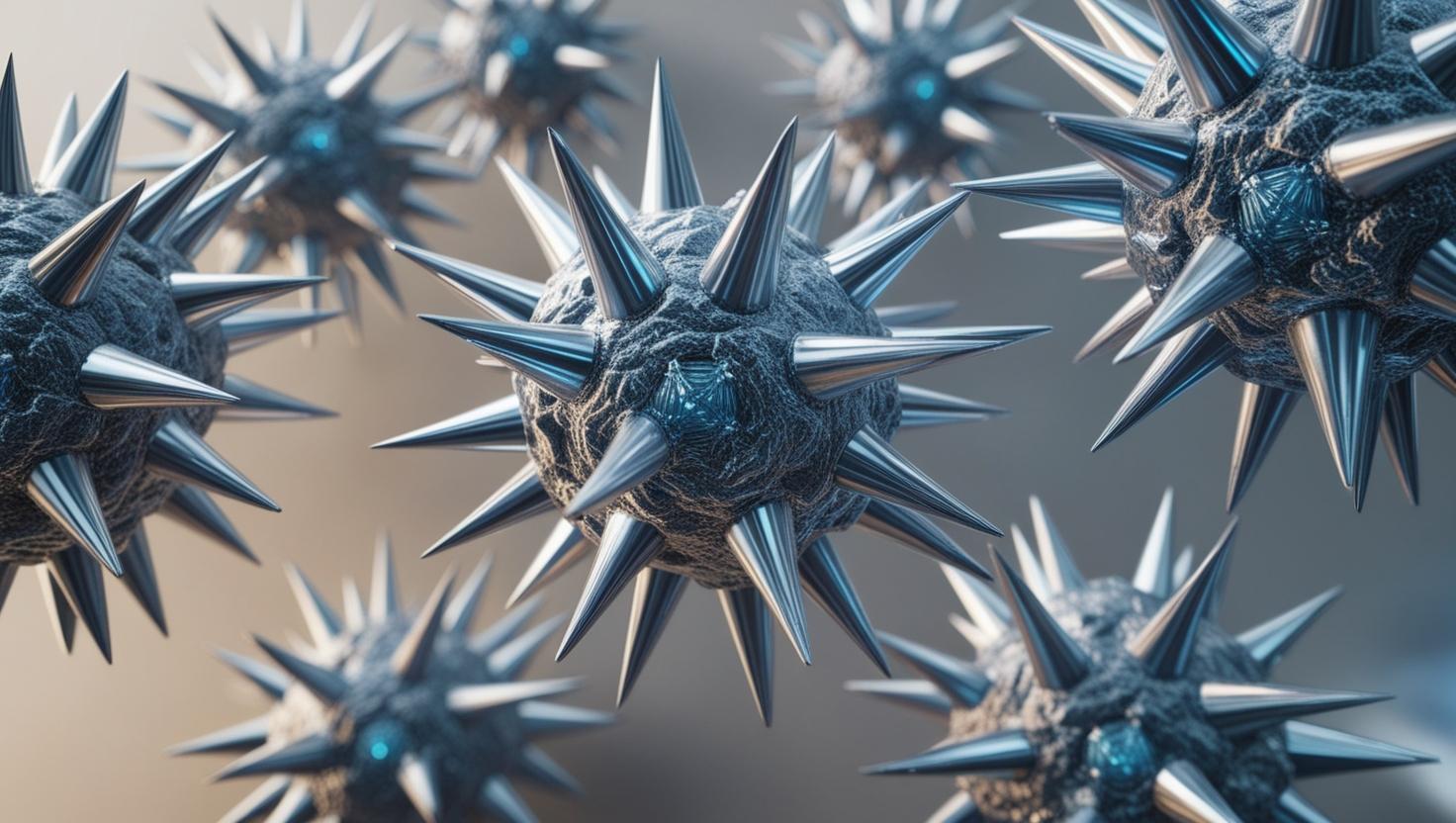Artificial Intelligence and Nano Technology?
Imagine building things atom by atom, molecule by molecule. That is the power of nanotechnology, where we are talking about crafting materials a staggering 800 times smaller than the width of a human hair. The ability to engineer materials at this scale will revolutionise everything from the devices we use to the medicines we take. This level of precision is extremely difficult to achieve; therefore, Artificial Intelligence’s assistance is invaluable, and in fact, such intricate manipulation would be nearly impossible without it. Artificial Intelligence (AI) is providing a powerful boost to nanotechnology, by doing two crucial things:
- Enabling the unlocking of hidden secrets within microscopic images, giving us a deeper understanding of these tiny materials, and
- Enabling the creation of faster and more accurate simulations, saving countless hours of computation.
AI-powered nanotechnology is paving the way for nanoscale computers that will lead to a significant increase in processing power, storage capacity, and energy efficiency. Machine learning algorithms will help predict material properties leading to specialised materials with unique characteristics, like enhanced strength and conductivity.
AI for Nanotechnology: Amplifying the Benefits
Nanotechnology holds immense potential to revolutionise various aspects of human life, offering a wide array of future benefits, as indicated by the examples below:
1. Medicine and Healthcare: Advancements in AI and Nanotechnology

- Targeted Drug Delivery: To minimise side effects and increase treatment effectiveness, a delivery system, using nanoparticles, delivers drugs directly to diseased cells.
- Early Disease Detection: Timely intervention, made possible by nanosensors that detect diseases at the earliest stages, delivering improved patient outcomes.
- Regenerative Medicine: Through the use of nanomaterials, the repair of damaged tissues and organs leads to improved healing and regeneration.
- Personalised Medicine: Nanotechnology enables the process of tailoring treatments to individual genetic profiles which makes personalised medicine possible.
2. AI and Nanotechnology for Environmental Sustainability

- Water Purification: Clean and safe drinking water is provided by nanofilters, which effectively remove pollutants.
- Air Purification: By capturing and eliminating airborne pollutants, nanomaterials achieve improved air quality.
- Renewable Energy: Enhanced efficiency of solar cells and other renewable energy technologies contributes to reducing human reliance on fossil fuels, with nanotechnology playing a vital role.
- Environmental Remediation: The clean-up of environmental contamination and the restoration of polluted sites occurs through the use of nanoparticles.
3. Materials and Manufacturing: Exploring the Potential of AI and Nanotechnology

- Stronger and Lighter Materials: Engineers use nanocomposites to produce materials with enhanced strength, lightness, and durability, resulting in materials that outperform traditional options.
- Self-Healing Materials: The design of self-repairing nanomaterials enables the creation of products and infrastructure with extended lifespans.
- Advanced Electronics: Through the use of nanotechnology, we develop faster, smaller, and more energy-efficient electronic devices.
4. Sustainable Food Systems: AI and Nanotechnology Applications

- Improved Food Production: Farmers improve and benefit from agricultural practices by using nanosensors to monitor soil conditions and crop health.
- Enhanced Food Safety: Through the use of precisely engineered nanomaterials, such as function specific nanoparticles and nanosensors, we can detect a wide range of foodborne pathogens, including bacteria like E. coli and Salmonella, as well as harmful chemical contaminants, enabling rapid and accurate assessments of food safety.
- Smart Packaging: Utilising nanotechnology to create packaging that extends shelf life and provides real-time food quality monitoring.
The AI-Nano Threat: Unforeseen Dangers
Human desire for innovation, driven by both biological and social factors, often begins with curiosity or good intentions. Yet, this very desire can be perverted by malicious actors, leading to harmful consequences. Consider the internet, a prime example: originally designed as a research network, it has become a conduit for cybercrime, misinformation, harassment, and terrorism, among other destructive activities. The convergence of AI and nanotechnology presents significant dangers, as shown below:
1. Health and Environmental Risks:
(i) Nanotoxicity:
- Due to their small size, which allows them to penetrate cells and tissues, nanoparticles can interact with biological systems in unpredictable ways, potentially causing damage.
- The long-term effects of exposure to various nanomaterials are still unknown.
- There is a potential risk that AI-driven design of nanomaterials could lead to the creation of particles with unforeseen toxic properties.
(ii) Environmental Contamination:
- The release of engineered nanomaterials into the environment could lead to widespread contamination, with unknown consequences for ecosystems.
- Malfunctioning or misused self-replicating nanobots, while currently theoretical, could pose a significant threat to the human race.
(iii) Autonomous Replication:
- The threat of self-replicating nanomachines that could obliterate and convert all matter.
2. Security and Ethical Concerns:
(i) Weaponisation:
- Combining AI with tiny machines could create extremely powerful and dangerous weapons that operate on their own.
- Hiding and deploying nanoweapons without anyone knowing raises serious ethical and security questions.
(ii) Surveillance and Privacy:
- The use of nanoscale sensors could lead to constant surveillance, which would seriously violate people’s privacy.
- AI could use data from tiny sensors to create incredibly detailed records of people’s movements and habits, leading to negative effects like reduced freedom of expression, increased stress, anxiety, and feelings of helplessness.
(iii) Ethical Dilemmas:
- Manipulating matter at the atomic level brings up serious ethical dilemmas concerning the essence of life, personal identity, and the potential for human enhancement.
- AI can deepen inequalities in nanotechnology by allowing some people to access its benefits, whilst unfairly exposing others to its dangers. This widens the social equality gap.
(iv) Malicious use:
- AI could create nanomachines that attack living things, with no way to defend against these threats.
Securing the Nanoscale: A Global Safety Initiative in the Age of AI and Nanotechnology
To effectively manage the potential risks of nanotechnology, international and national bodies must establish a network focusing on four key areas.
- Nanotoxicity: Assess and mitigate the potential toxicity of nanomaterials.
- Environmental Contamination: Monitor the release and accumulation of nanomaterials in the environment and assess their ecological impact.
- Autonomous Replication: Enforce bans to prevent uncontrolled self-replication of nanomachines.
- Security/Ethical Concerns: Prevent nanoweapon development, protect privacy, counter malicious use, and address ethical dilemmas.
In the case of any regulation breaches, relevant governing bodies should impose fines or imprisonment.
These bodies would need to work collaboratively to establish regulations, conduct research, enforce treaties, and promote ethical practices, ensuring the safe and responsible development of nanotechnology.



